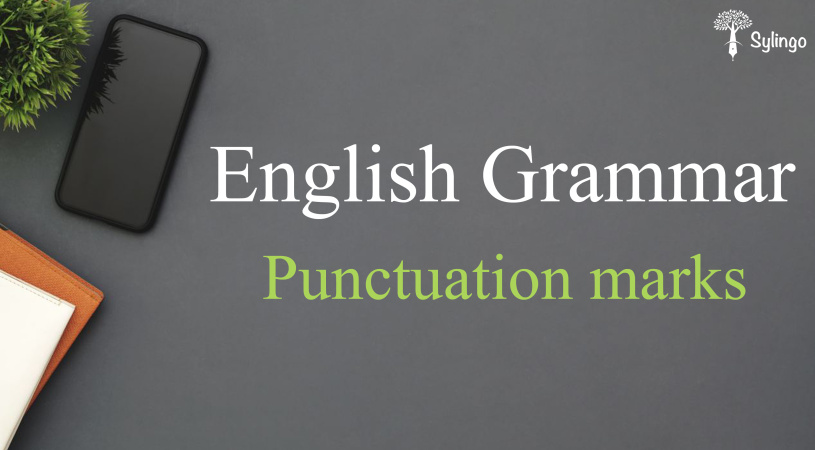They are used to organize the structure of a sentence in order to avoid ambiguity in the meaning. In this lesson, we will explain the rules of applying punctuation in sentences.
Punctuation types
1- Period/Full stop (.)
2- Comma (,)
3- Question mark (?)
4- Exclamation mark (!)
5- Semicolon (;)
6- Colon (:)
7- Hyphen (ـ)
8- Dash (-)
9- Apostrophe (')
10- Quotation mark (" ")
Period/Full stop (.)
1- It is used at the end of declarative or imperative sentences to separate them from the ideas that follow them. It is always followed by a capital letter.
Example: He was at work. He came home late.
2- It is used when shortcutting a word.
Examples:
i.e. → that is
e.g. → for example
ex. → exercise
Comma (,)
1- It is used between a group of parts of speech in a sentence, whether they are adjectives, adverbs, or nouns. The last two words are separated by conjunction in addition to the comma.
Example: I like meat, rice, and eggs.
2- It is used before a direct speech.
Example: She said, “I need to leave now.”
3- It is used when separating independent clauses or before a coordinating conjunction.
Example: We studied hard, but we didn’t pass the exam.
Question mark (?)
1- It is used at the end of wh questions.
Example: What do you want to eat?
2- It is used at the end of yes/no questions.
Example: Do you work?
3- It is used at the end of tag questions.
Example: We are going to the party together, aren’t we?
Exclamation mark (!)
1- It is used to indicate strong feelings.
Example: You look so handsome!
2- It is used with interjections.
Examples:
Look out!
Wow!
Semicolon (;)
1- It is used to join independent clauses if they have a logical connection.
Example: They went running; then they went to work.
2- It is used when dividing a list of items and adding more information.
Example: I visited Vienna, Austria; and Venice, Italy.
Colon (:)
1- It is used to make a list of something, or to give ideas, and opinions.
Example: The trip to three cities: London, New York, and Rome.
2- It is used before a direct speech or a quotation.
Example: She said: “I am visiting my parents this weekend.”
Hyphen (ـ)
1- It is used to combine words to form a new word with one meaning.
Example: Non-stop
2- It is used between numbers.
Example: Twenty-five
Dash (-)
1- It is used to separate an idea from the previous and following sentences. We use it to give information between the two sentences. It differs in shape from the hyphen since the dash is longer.
Examples:
My friend - the one you met yesterday - traveled to Brazil.
I did my best to get that job, but I didn’t - at least I tried!
Apostrophe (')
1- It is used to form abbreviations between pronouns and verbs or between a verb and (not).
Examples:
I’m a student.
He isn’t here.
2- It is used in possessive (s).
Example: It is Tom’s car.
Quotation marks (" ")
1- They are used at the beginning and end of a direct speech or quote.
Example: She says: “I am a doctor.”
Note:
All punctuation marks are followed by a space, but not before.
That was everything about punctuation marks, their types, and their uses. If you have any questions or suggestions, you can share them in the comments section below.
Exercises
Rewrite these sentences with punctuation marks.
1- What do you do for a living
2- Be careful
3- Your friend father is here to pick her up
4- I bought beautiful big and white boots
5- My sister in law has arrived
Answers
1- What do you do for a living?
2- Be careful!
3- Your friend's father is here to pick her up.
4- I bought beautiful, big, and white boots.
5- My sister-in-law has arrived.





